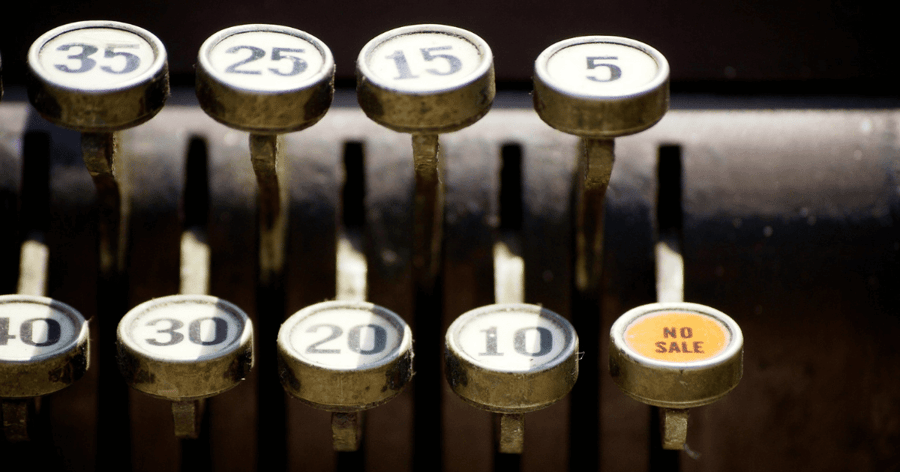4 Tools Every Retailer should be Using
Retail
Technically speaking, you only need four things to be a retailer: some goods to sell, a channel to sell those goods, a method of promoting those goods, and someone to buy those goods. 30, 40, and 50 years ago these were really all you needed to have a successful business. But in today’s world, especially here in the 21st century, these items alone simply aren’t good enough. To be a competitive retailer in the age of technology you need to have an arsenal of tools at your disposal, and these four are must haves:
1) A Mobile Application
With a smartphone in nearly every adult’s pocket, having a mobile application for your company is a no-brainer. According to the NRF 43 percent of all online activity related to retail happens on a smartphone, that’s more than any other device including desktops. With so many people looking to their pockets for information, you need to ensure that they get it straight from the horse’s mouth. Now I’m not saying that your application needs to be built for e-commerce, but it does need to provide information. Customers should be able to find their closest store, browse current promotions, or contact support. The goal of any mobile application should be to simplify the shopping experience for the increasingly tech-savvy shopper.
2) Data Analytics
Like I said in the opening we live in the age of technology, which also means that we live in the age of data. It seems like everything in retail is capable of collecting information. Even items like shelves, mirrors, and baskets are on the verge of becoming “smart.” With all of this rich data flowing through your organization on a regular basis, it’s foolish not to use a data analytics tool. Luckily many retailers have begun to use tools designed for specific data sets, like returns, loyalty, or transactions, but you should consider a tool that is capable of integrating all of your data in one place. The advantage to this is the ability to spot trends across data types that single-track tools can miss. For example you can link excess returns to someone who is abusing their loyalty privileges, which could ultimately improve sales and reduce fraud.
3) Customer Service Tools
Retailing has become so customer-centric over the last decade that not having some sort of customer service tool in place is suicide. At a bare minimum you need two things here: a great customer service training tool for your employees, and a way for customers to communicate with you. When it comes to the latter, the possibilities are endless. There are the more traditional customer service channels like phone, email, chat, in-store, and social media (channels that all retailers should be using); and then there are more innovative methods like Neiman Marcus providing all of their associates with a phone to communicate directly with their clients, Amazon letting customers video chat with their support team, or Trunk Club who connects every customer with a personal stylist. Shopping should be a personal experience, and great customer service helps accomplish this.
4) Web Analytics (like Google Analytics)
Tracking your in-store traffic has become easy over the years thanks to people counting tools, video systems, sales analysis, and your own two eyes. Google analytics is like people counting for your website. It lets you know how many people visited your site, what pages they were on, how long they viewed those pages, and what actions they took on those pages. It can even show you how visitors got to your site, where they live, what kind of device they are using, and who is viewing your website right now. The amount of data that tools like Google Analytics can provide is immense, and when used properly it can help you make informed decisions about your online presence which could improve the in-store experience as well.
There is a laundry list of other tools that retailers can, and should use – such as loss prevention tools, supply chain management tools, and omnichannel tools – but when it comes to tools that retailers need to have to survive the four discussed above are vital. The retail industry has become a customer-centric and data driven one. Staying on top can be difficult, but with the right tools you can thrive.
To learn more about top growth strategies for retailers, download our whitepaper, "Unlocking the Three Things" now!
Related Articles

The New Retail Store Operations Checklist
It may seem like today’s daily store operations aren’t much different than they were 100 years ago. But with the increasing r...
CIOReview Magazine Names Agilence One of the 20 Most Promising Retail Solution Providers for 2018
Data analytics leader recognized in retail technology publication, CIOReview MOUNT LAUREL, NJ—January 16, 2018 – Agilence, In...
Why Loss Prevention Leaders Must Become Analytics Evangelists
As retailers bounce back from the pandemic, they’re simultaneously finding innovative ways to serve customers while controlli...Subscribe to our blog
Receive free educational resources like exclusive reports, webinars, and industry thought leadership articles straight to your inbox.


